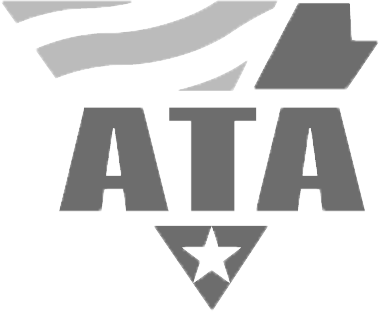The intricate dance of global commerce is constantly evolving, and at its heart, the US-Mexico trade relationship continues to grow in significance. For businesses operating across this vital corridor, mastering the art of cross-border logistics is paramount. However, this dynamic environment also presents inherent complexities and risks that can impact efficiency and profitability. The focus for many forward-thinking organizations is increasingly on proactive strategies for de-risking US-Mexico cross-border logistics, ensuring seamless operations and supply chain resilience.
Understanding the Evolving Landscape of US-Mexico Cross-Border Trade
The US-Mexico trade corridor is a powerhouse, driven by nearshoring trends, diversified manufacturing, and a strong Free Trade Agreement (USMCA). This economic synergy has led to an unprecedented flow of goods, with the Laredo Gateway serving as a critical artery, handling a substantial volume of daily cross-border truck movements. However, this growth also brings heightened challenges, from fluctuating tariffs and shifting regulatory landscapes to increased border congestion and the imperative for robust security protocols. Understanding these multifaceted dynamics is the first step in formulating effective risk mitigation strategies.
Key Challenges and Strategies for De-risking US-Mexico Cross-Border Logistics
Successful cross-border logistics demands more than just moving freight; it requires a deep understanding of the unique challenges at play. Here are some of the critical areas to address when aiming for effective de-risking:
- Border Delays & Congestion: High volumes and stringent inspection processes can lead to significant delays, impacting delivery schedules and increasing costs.
- Customs & Trade Compliance: Navigating the nuances of USMCA regulations, tariff changes, and documentation requirements is a constant challenge. Non-compliance can result in hefty fines and further delays.
- Freight Security: The long stretches and varied terrain of cross-border routes necessitate comprehensive security measures to protect valuable cargo from theft or damage.
- Visibility & Communication: Lack of real-time visibility into shipment status and inconsistent communication across different legs of the journey can create uncertainty and hinder proactive problem-solving.
- Carrier Reliability & Capacity: Securing reliable carriers with consistent capacity, especially for specialized freight or during peak seasons, is crucial.
Addressing these challenges requires a strategic, multi-pronged approach that leverages expertise, technology, and strong partnerships to achieve de-risking in US-Mexico cross-border logistics.
Navigating Operational Delays and Freight Volume Swings
Operational fluidity is essential for de-risking US-Mexico cross-border logistics. Border delays, whether due to increased volume, customs inspections, or infrastructure limitations, can quickly cascade into supply chain disruptions. Furthermore, the inherent volatility of freight volumes, influenced by economic shifts, seasonal demands, or unexpected global events, can strain capacity and inflate costs. To effectively navigate these challenges, consider:
- Strategic Gateway Utilization: Leveraging a logistics partner with specialized knowledge and established operations at high-volume gateways like Laredo can significantly streamline border crossings. Their expertise in managing flows and connections can reduce unexpected hold-ups.
- Cross-Docking and Consolidation: Utilizing strategically located facilities for cross-docking and LTL consolidation can help optimize load capacity, reduce transit times, and make shipments more efficient. This is particularly beneficial for managing varied freight volumes.
- Proactive Communication: Consistent and transparent communication regarding potential delays or volume changes allows shippers to adjust their plans and manage expectations effectively.
- Diversified Capacity: Relying on a provider with a blend of asset-based and brokerage capacity offers flexibility. An asset-based fleet ensures dedicated resources and control, while a strong brokerage network provides access to additional capacity during volume spikes or for specialized needs.
Mastering Trade Compliance and Tariff Management
The complexities of trade compliance and tariff management are significant hurdles in US-Mexico cross-border logistics. The United States-Mexico-Canada Agreement (USMCA) sets forth specific rules of origin, labor provisions, and intellectual property protections that businesses must adhere to. Missteps in compliance can lead to costly delays, penalties, and even cargo seizures. To mitigate these risks, companies must:
- Deep USMCA Expertise: Partner with logistics providers who possess profound knowledge of USMCA regulations, including qualification processes for goods to receive preferential tariff treatment. Many goods do not automatically qualify just by crossing the border.
- Accurate HTS Classification: Proper classification of goods using Harmonized Tariff Schedule (HTS) numbers is critical. New tariffs can introduce new provisional HTS numbers, adding another layer of complexity that demands meticulous attention to detail.
- Proactive Documentation: Ensure all necessary documentation is accurate, complete, and submitted in a timely manner. This includes commercial invoices, packing lists, certificates of origin, and any other specific permits required for certain goods.
- Cash Flow Management for Duties: Anticipate and manage the financial implications of duty payments, especially with the introduction or reintroduction of tariffs. This requires careful financial planning and potentially working with customs brokers who can assist with duty deferrals or other payment strategies.
- Regular Compliance Audits: Implement internal or external audits to regularly review compliance processes and identify potential weaknesses before they lead to issues.
Mastering these aspects of trade compliance is central to de-risking US-Mexico cross-border logistics and ensuring a smooth flow of goods.
Leveraging Partnerships and Data for Enhanced Supply Chain Resilience
In the unpredictable world of cross-border logistics, resilience isn’t just a buzzword; it’s a necessity. Achieving this resilience, particularly in the US-Mexico corridor, hinges on strategic partnerships and intelligent data utilization. Choosing the right logistics partner means aligning with a company that understands the intricacies of this trade lane and is equipped to handle its challenges.
A true partner offers more than just transportation; they provide comprehensive supply chain solutions. This includes:
- Consultative Approach: A partner who conducts a detailed review of your existing logistics network to pinpoint inefficiencies and areas for improvement.
- Customized Network Strategies: Tailored solutions designed to enhance visibility, implement effective cost-control mechanisms, and maximize overall operational efficiency.
- Advanced Technology & Visibility: Utilizing modern telematics stacks and open-API GPS links for 100% real-time visibility. This data-driven approach allows for proactive management and seamless integration with your existing ERP systems.
- Dedicated Support: Access to dedicated, bilingual customer service teams who can provide clear communication and swift problem-solving across borders.
- Risk Mitigation Expertise: A partner, like APEX Transit, that is CTPAT certified and deeply familiar with USMCA regulations, ensuring secure and expedited border crossings and preventing compliance issues.
By leveraging the expertise of an experienced logistics provider and harnessing the power of real-time data, businesses can significantly strengthen their supply chains, making them more adaptable and resilient to the dynamic demands of US-Mexico cross-border trade. This proactive stance is key to successfully de-risking US-Mexico cross-border logistics and sustaining competitive advantage.
Have questions? Contact us here.














